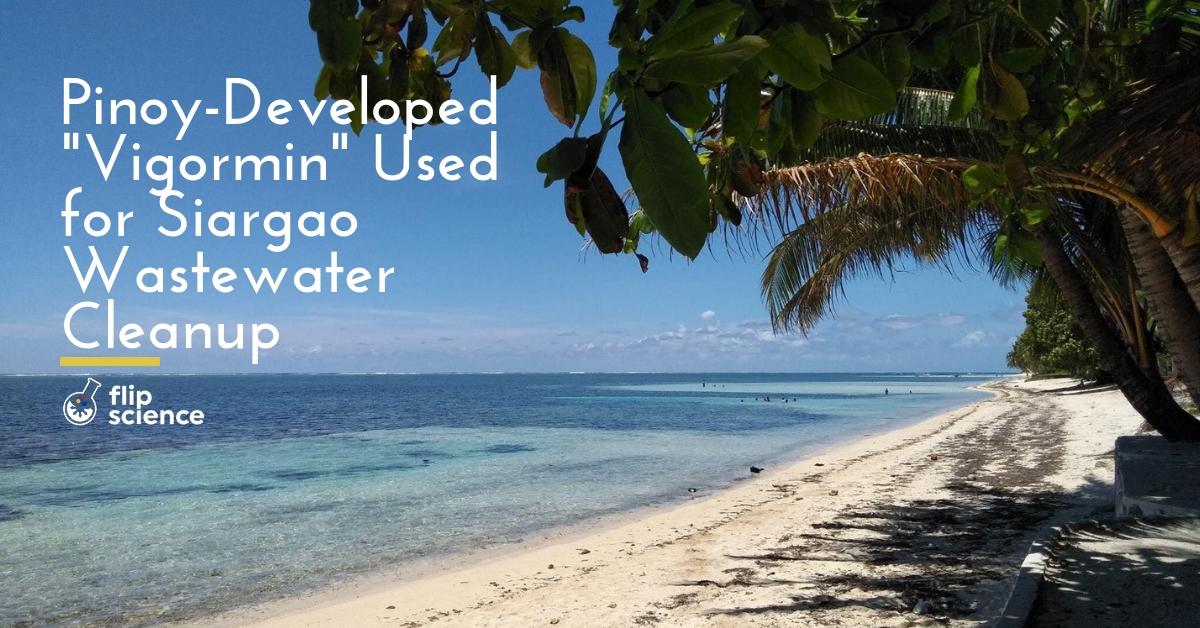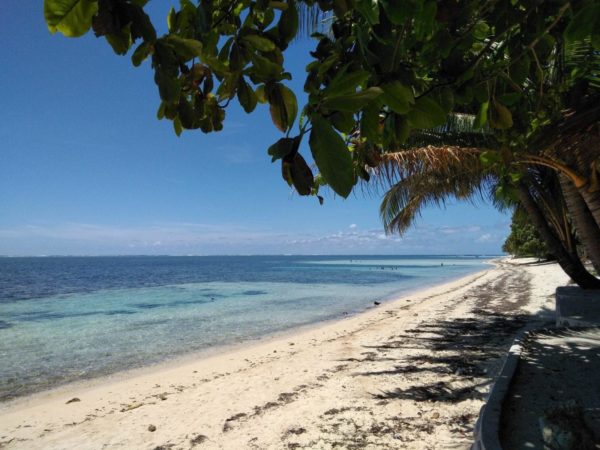
•Many tourist attractions in the Philippines urgently need better wastewater management systems.
•A government-sponsored initiative endorses the use of a Pinoy-developed organo-material, Vigormin, as a sustainable treatment solution.
•The eco-friendly treatment system’s successful trials suggest that it can be adopted in other areas with the same problem.
Wastewater treatment is one of the biggest challenges that beach resorts face in the Philippines, particularly in popular tourist attractions.
Due to the lack of an environmentally sustainable treatment system, wastewater tends to go straight into the sea. This creates a massive problem that impacts not only tourism in these areas, but also the overall health of their local ecosystems.
Editha Gonzales, former General Manager of Travellers Pension House & Beach Resort in General Luna, Siargao, observed that earlier septic tank models featured a bottomless design. “[K]aya direkta po ang paglabas ng aming wastewater sa dagat. At ang contamination po nito sa ating tubig ay malaking problema ng mga resorts dito sa isla. (So the wastewater drains straight into the sea. The contamination of the water is one of the biggest problems of resorts in the island.)”

“Organo-mineral” wastewater treatment
To deal with this problem, the Department of Science and Technology-Philippine Council for Industry, Energy and Emerging Technology Research and Development (DOST-PCIEERD) has employed a Pinoy-developed “organo-mineral” powder called Vigormin to establish a safe and sustainable wastewater cleanup system.
Described as a “self-sustaining, portable, and movable wastewater treatment system,” the Eco-Friendly Septic System (Eco-Sep) uses Vigormin alongside biostimulation and filtration technology.
Vigormin can neutralize the unpleasant odors and colors in wastewater, while also improving water quality following the standards established by the Department of Environment and Natural Resources (DENR). Dr. Merlinda Palencia, a Chemical Engineering (ChE) professor from Adamson University, developed this technology.
Gonzales shared that the Eco-Sep installation effectively treats the wastewater at the resort. Now, instead of contaminating the sea, the system funnels the newly cleaned water directly to the resort’s plants.
Due to the success of the trial, other hotels and beach resorts on the island are also planning to set up Eco-Sep systems in their respective spaces.
Additionally, Sugba Lagoon in Del Carmen, Siargao, will adopt the system starting on February 10.
Tried and tested
Eco-Sep initially saw use in the sewage systems of the bunkers of Yolanda survivors in Palo, Leyte in 2013. Boracay hotels and households also tested the system in 2015. Just last year, the Department of Science and Technology-Mindoro, Marinduque, Romblon and Palawan (DOST-MIMAROPA) endorsed Vigormin’s use in Coron and El Nido in Palawan.
DOST-Caraga selected tourist attractions and environmentally compromised locations to be Eco-Sep field testing grounds. DOST-PCIEERD funded this project, known as Project FRESH.
According to DOST-PCIEERD Executive Director Dr. Enrico Paringit, the agency will spearhead more initiatives for environment conservation in the country.
“We will continue to provide solutions to societal problems through strategic research and development,” said Dr. Paringit.
Cover photo: DOST-PCIEERD
References
- Official press release.

Author: Mikael Angelo Francisco
Bitten by the science writing bug, Mikael has years of writing and editorial experience under his belt. As the editor-in-chief of FlipScience, Mikael has sworn to help make science more fun and interesting for geeky readers and casual audiences alike.





